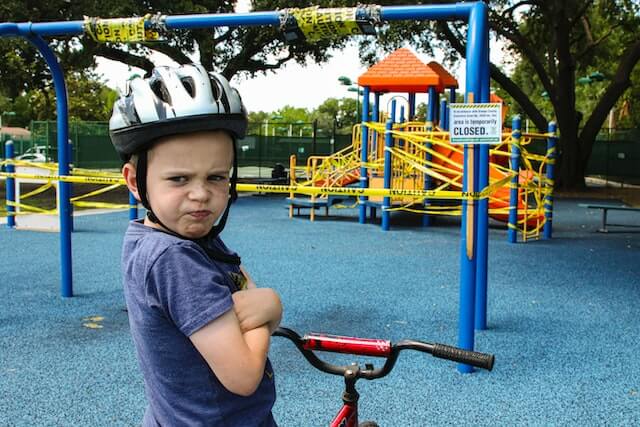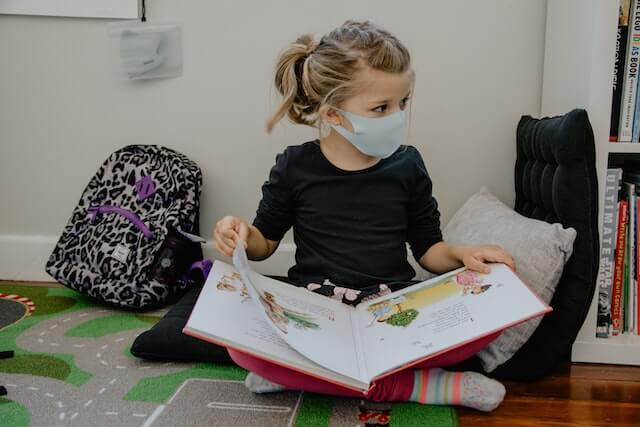Children with autism often have difficulty with nail cutting. The process can be daunting and even painful for them. However, there are some things that you can do to make it easier.
If you have a child with autism and nail cutting is an issue, try these helpful tips.
Why Is Cutting an Autistic Child’s Nails So Difficult?
There are a few reasons why cutting an autistic child’s nails can be difficult. First, many children with autism have Sensory Processing Disorder (SPD).
This means they are hypersensitive to touch and noise. The sensation of having their nails cut can be overwhelming for them.
But even if a child with autism doesn’t have SPD, the sounds and touch associated with nail cutting can still be upsetting. What’s more, many children with autism simply don’t see nail cutting as necessary.
In addition to these factors, it’s understood that most typically-developing children find nail trimming unpleasant, making the task even more difficult for parents of children with autism.
Tips on Cutting a Child’s Nails with Autism
Now that you have a better understanding of how autism can affect your child getting their nails trimmed, here are some tips on cutting them:
- Try Starting Slowly to Build Up Their Tolerance: Start with just one finger and cut a very small amount off. Your goal is to get them used to the process and not overwhelm them.
- Don’t Turn Cooperation Into a Big Deal: Just because they let you cut one nail doesn’t mean they’ll let you do them all. Take your time and go slowly.
Moreover, you want this process to be a normal thing, not a big deal.
- Make Sure You Are Both in Comfortable Positions: This will help both of you feel more relaxed. If they’re comfortable, they’re more likely to cooperate.
- Help Them Understand the Process: Let them know what you’re going to do before you start. By helping a child with autism understand what’s happening, you can make the experience less overwhelming for them.
- Explain the Importance: Children with autism can be very literal. If you tell them that long nails are dangerous and can hurt people, they’re more likely to understand why this needs to be done.
- Try Massaging Their Hand: As discussed, touching can be an issue for children with autism. A gentle hand massage can help them relax and feel more comfortable with you touching their hands.
- Try the Right Equipment: You may need to experiment with different types of nail clippers to find the ones that work best for your child. Remember, some children with autism are sensitive to certain sounds.
So you may want to get clippers that don’t make much noise. You may also want to try electric clippers, as they can be less daunting than traditional ones.
- File First and Work Your Way to Cutting: If your child is really resistant to having their nails trimmed, you can try filing them down first. Once they’re used to that, you can then move on to cutting.
- Try Distractions Like Toys and Videos: If your child is fixated on something, you could use that to your advantage. If they’re watching a video or playing with a toy, it can provide the perfect opportunity to trim their nails.
- Try When They Are Sleeping: This may be the best option if your child is really resistant to having their nails trimmed. If they’re asleep, they won’t be able to fight you, and you can quickly get the job done.
Nail Clippers That Your Autistic Child May Prefer
As we touched on above, the nail clippers you choose for your autistic child can make all the difference in how they respond to getting their nails cut. If you’re not sure what type of nail clipper to get, here are a few that your autistic child may prefer:
360-Degree Head for the Right Angle
The 3-in-1 Nail Clippers come with a unique 360-degree head that helps you cut your child’s nails at the right angle every time. This is important because it can help prevent ingrown nails and other nail issues.
Sharp Blades for a Clean Cut
The blades on these nail clippers are also extremely sharp, so you can make sure your child’s nails are being cut cleanly and evenly. This is a vital feature, as it can help prevent nail trauma and pain for your child.
Sharp blades also mean quieter cutting, which can be beneficial for children with autism who are sensitive to noise.
Precision Spin Snips
The precision spin snips on these nail clippers are specifically designed to help you make clean, precise cuts, thereby reducing the risk of your child’s nails being cut too short or unevenly.
What’s more, you can cut nails at difficult angles for greater convenience and comfort.
Toe Nail Clippers and File
Along with the nail clippers are toe nail clippers and a file. This is helpful because it gives you everything you need to take care of your child’s nails in one convenient package.
The file can also be used to smooth out any sharp edges on your child’s nails after they’ve been cut.
Electric Filer
This type of nail clipper is actually a battery-operated Electric Filer. It features a rotating filing head that files the nails instead of cutting them. This can be a good option for children who are sensitive to the sound of traditional nail clippers.
Six Grinding Heads
The electric filer has six different grinding heads that can be used to file the nails down gradually. Moreover, each head features varying degrees of coarseness, so you can start with a coarse head and then move to a finer one.
If you recall from our discussion above, this can prove to be a huge benefit for some children with autism.
Rather than having the nails cut all at once, the grinding heads allow you to file them down gradually. It’s an effective way to reduce the anxiety and sensory overload that some children experience.
Nail Clipper with Light
The built-in light illuminates the area you’re working on, so you can see exactly what you’re doing. Many parents find that this is extremely helpful, especially when their child is squirmy.
Highly Portable Design
Thanks to a replaceable battery, you don’t have to worry about cords getting in the way and making the nail-trimming experience more difficult than it needs to be.
Conclusion
With a little patience and understanding, you can help make nail-cutting time a breeze. Just remember to go slowly, be gentle, and use the tools that work best for your child. With a little practice, you’ll be a pro in no time.
If you are ready to work with the best ABA therapy provider in New York, New Jersey, or Indiana, give us a call at (732) 402-0297. Our dedicated team is ready to help and we will treat you like family.









